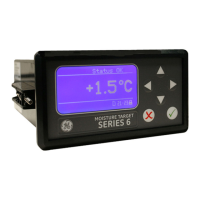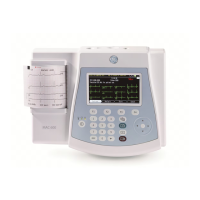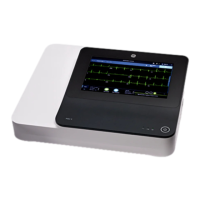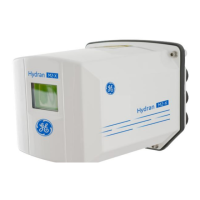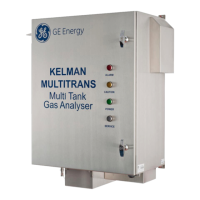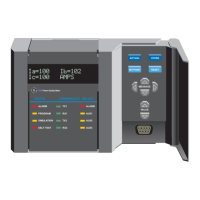GE Analytical Instruments ©2006 DLM 14291 Rev. A
4-10
the ON position and the protective caps are on the sample and oxygen inlets. To
perform the test:
• Use a 7/16" wrench to tighten the protective caps on the sample inlet and
ozone supplies.
• Turn on the Main Power switch located at the rear of the NOA.
• With the Analysis option highlighted, press the ENTER Button to display the
Analysis Menu.
• Use the Down Arrow Button to scroll to Stand-by and press ENTER. The vacuum
pump will start.
• Allow the pump to operate for ~10 minutes and record the reaction cell
pressure by selecting the Control option from the Main Menu and pressing the
ENTER Button.
• From the Control Menu, use the Down Arrow Button to scroll to Status and
press ENTER. The cell pressure will be displayed.
Reaction Cell Pressure Vacuum Test _____________________ torr
If the vacuum pump connections are tight, the reaction cell pressure should
decrease to 1-2 torr within 10 minutes. If the pressure decreases to <2 torr, the
connections are tight.
If the pressure is higher check the connections to the vacuum pump, retighten the
hose clamps and the connection of the vacuum pump to the back of the analyzer.
If the pressure remains above 1-2 torr after retightening the connection, contact
Sievers Instruments, Inc. at (303) 444-2009 for assistance.
After completing the vacuum test, turn the vacuum pump off by pressing CLEAR to
return to the Main Menu, scroll to Analysis and press ENTER and select Stop and
press ENTER. The display will change with Continue and Stop options. Select Stop
to turn off the vacuum pump.
Leave the main power switch ON while completing the installation to cool the
PMT.

